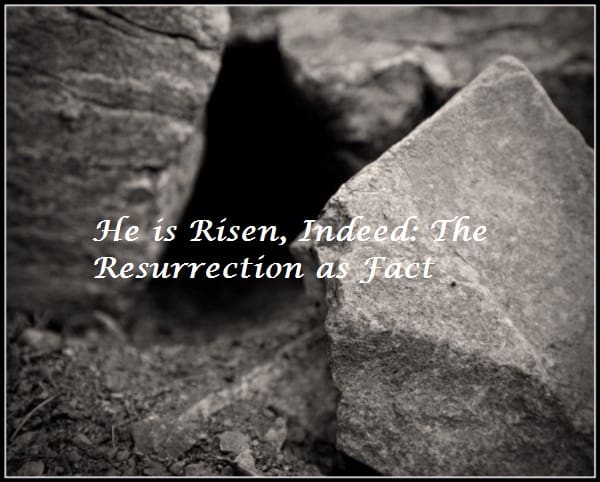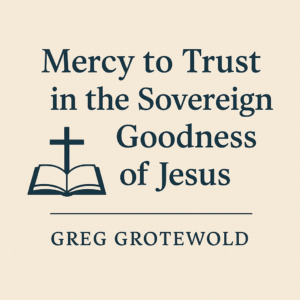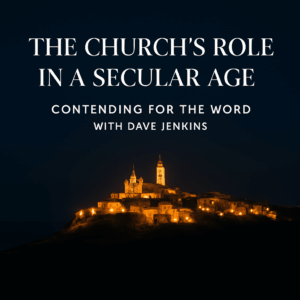⏱️ Estimated Reading Time: 5 min read
In approaching Easter, we come closer to the day in which many will pile into churches across the land, singing songs about Jesus being alive, and powerful accounts from the Gospels will loudly proclaim the resurrection of Jesus. It is a magnificent story, a fascinating narrative. Unfortunately, however, some view the resurrection as simply a story, as simply a narrative. Ironically enough for a story about something being made alive, many of us experience a disconnect when it comes to the resurrection story, because it doesn’t vitalize us.
There is a deep and dark part of our Christian faith that struggles to wrap our head around this critical moment of the story of Christ. Although we sing that Jesus is alive, do we truthfully, honestly treat it as a historically reliable, verifiable, and unquestioned happening? When pressed to affirm such statements, the confidence begins to lose its grip, the doubt begins to creep in. Who can blame us, right? For one, we have weak, feeble minds; to conceptualize a crucified man, covered in blood and gore and spit and sweat, lying in a mammoth grave for three days only to walk out virtually unscathed by the matter is so cosmos-altering, so against the grain of the natural human experience. But to make the matter more perplexing, it happened over 2000 years ago. We are so distant from the event. All we have to go on is what has been passed down and ultimately our faith.
And faith is another matter of its own. In coming to the resurrection, most of us make the blanket statement of “I have faith,” almost disregarding the historical probability and actuality of the event for the sake of taking the pious road. At the resurrection account, we are tempted to leave our apologetic at, “For the Bible tells me so.” How does this help one who has little faith in the resurrection, much less the Bible? And further, how does this help our faith, by placing it in things we aren’t necessarily convicted in believing as “truth?” In short, we should believe — and rejoice — in the resurrection, not merely because it is in the Bible, but because it actually happened.
Princeton theologian and apologist B.B. Warfield centered much of his apologetic argument for the Christian faith on specifically the doctrine of the resurrection, saying it is, “the cardinal doctrine of our system; on it all other doctrines hang.” Warfield felt that if the resurrection wasn’t true, the whole of Christianity collapses, but also the reverse; if the resurrection was true, Christianity is completely validated. There is a deep gravity, then, to the importance of being able to verify and validate this event as a historical happening. With this mind, and in the vein of Warfield, we will examine various evidences that solidify the truthfulness of the resurrection.
- The Gospels, Luke’s account of the early church in Acts, and the Pauline Epistles all inextricably tied together in history, psychology, and human nature. Warfield’s only possible explanation for these similarities is that these writers “were simply detailing actual facts.”
- The early church fathers from the beginning quoted these biblical books “with respect and reverence.”
- Despite the skeptic’s feelings on the theological teachings found in the New Testament, there is overwhelming agreement among Christians and non-Christians that the New Testament letters, primarily the Pauline epistles, are indeed genuine. Paul’s letters say much about the resurrection story, so we should pay attention closely to these books.
- When Paul describes his conversion, he describes it as “sight.” This is not Paul seeing a vision, because he clearly knows what visions are (see 2 Cor. 12). This is something different. It is unquestioned sight:
“We find ourselves, then, in this dilemma: If Acts is not true history, then these facts cannot be so used; if Acts is true history, then Paul’s conversion occurred quite otherwise; and again, if Acts is true, then so is Luke’s Gospel; and Acts and Luke are enough to authenticate the resurrection of Christ.
- The resurrection was unequivocally believed among the early church when Paul’s letters were written. “Whatever party lines there were, however near they came, yet they did not cut through this dogma.”
- Over 250 eye-witnesses, were living when Paul wrote his epistles.
- The Church owed its life, its continued existence, and growth, “to its firm belief in this dogma.”
- The Jewish leaders could not have stolen Christ’s body. And even if they would have, there best way of disproving Christianity would have been revealing the body as not resurrected.
- The apostles could not have stolen Christ’s body. Isn’t it compelling that nearly every apostles suffered and died and faced endless persecution, and not a single one faltered?
- Jesus did not “creep from the tomb,” as men like Schleiermacher have suggested. That would go against every eye-witness account, that Christ died.
Above are ten talking points which Warfield builds his case with for the truth of the resurrection. He says it poignantly here: “The empty grave is alone enough to found all Christianity upon.” We celebrate Easter this Sunday, because the man Jesus Christ historically, factually rose. The proofs do not end here, and this isn’t the end-all-be-all on this conversation. After all the evidence, all the history, all the facts, we are left, awe-struck, with only one explanation for what happened that Sunday morning.
“He is risen, indeed.”



